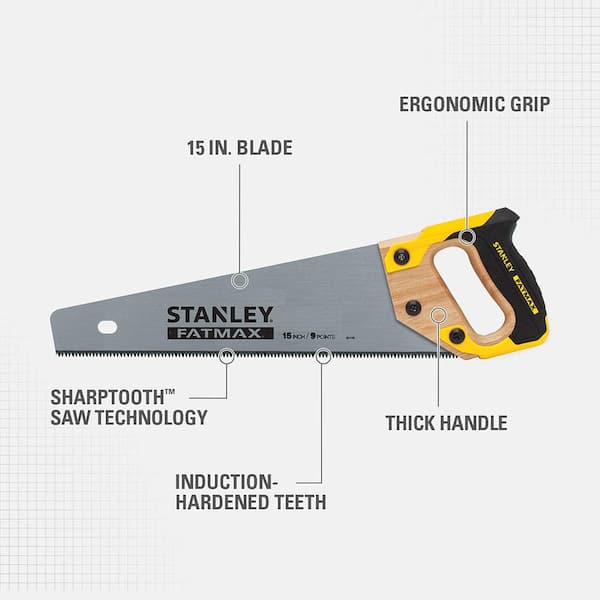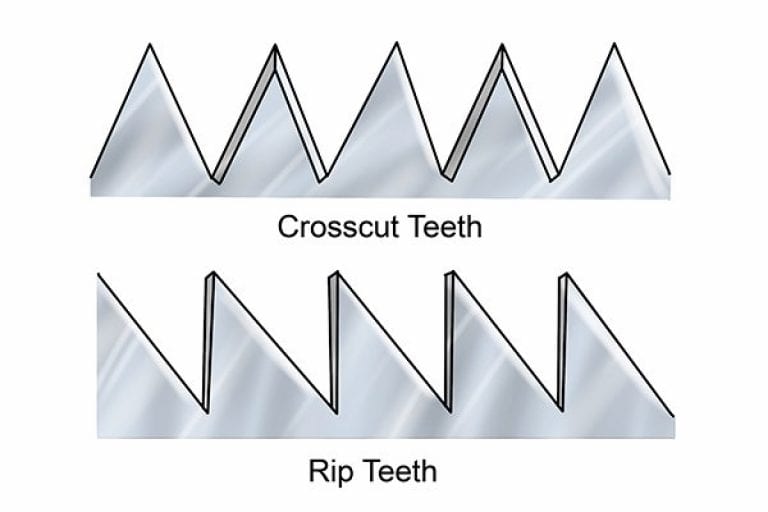If you’ve ever wondered about the inner workings of a hand saw, you might find yourself asking, “how many teeth does a hand saw have?” Well, my curious friend, you’ve come to the right place! In this article, we’ll explore the fascinating world of hand saw teeth and uncover the secrets behind their numbers.
You see, a hand saw is much more than just a sharp blade. It’s a precision tool designed to make smooth and efficient cuts through various materials. And the teeth play a crucial role in this process. So, let’s grab our magnifying glasses and dive into the intriguing realm of hand saw teeth!
Now, you may be wondering why the number of teeth on a hand saw matters. After all, won’t more teeth simply mean a better saw? Well, my young apprentice, the truth is a bit more nuanced. The number of teeth on a hand saw actually determines the type of cut it can make and the speed at which it cuts. So, buckle up and get ready to unravel the mysteries of hand saw teeth and their unique numbering system!

How Many Teeth Does a Hand Saw Have?
When it comes to woodworking tools, the hand saw is a classic and essential tool. It is widely used for cutting through various materials, including wood, plastic, and even metal. One important component of a hand saw is its teeth. But have you ever wondered how many teeth a hand saw actually has? In this article, we will explore the world of hand saw teeth and uncover the answer to this intriguing question.
Understanding Hand Saw Teeth
Hand saws are designed with specific tooth configurations to suit different cutting applications. The teeth of a hand saw are responsible for creating the kerf, which is the groove or channel produced when cutting through a material. There are different types of hand saw teeth, each with its own characteristics and purposes.
One common type of hand saw teeth is the rip teeth. These teeth have a flat shape with large, chisel-like pointed edges. Rip teeth are used for cutting along the grain of the wood, making them ideal for tasks such as rough dimensioning or ripping boards. The number of rip teeth on a hand saw typically ranges from 2 to 4 teeth per inch (TPI), although variations with higher TPI exist for specialized applications.
Another type of hand saw teeth is the crosscut teeth. Unlike rip teeth, crosscut teeth have a beveled shape with smaller, pointed edges. This tooth configuration enables the saw to create clean and smooth cuts across the grain of the wood. Crosscut teeth are commonly found on saws used for various woodworking tasks, such as joinery, cabinetry, and furniture making. The number of crosscut teeth on a hand saw can vary significantly, with fine-toothed saws having upwards of 15 TPI for precise and delicate work.
The Importance of Tooth Count
The number of teeth on a hand saw can greatly affect its performance and the quality of the cuts it produces. A hand saw with a higher tooth count will generally create smoother cuts, while a lower tooth count is better suited for rougher cuts. The tooth count also determines the saw’s aggressiveness and cutting speed.
For instance, a hand saw with fewer teeth per inch will remove material at a faster rate but may leave a rougher finish. On the other hand, a hand saw with a higher tooth count will provide a cleaner finish but may require more effort and time to cut through the material.
It’s important to note that the tooth count alone is not the only factor that influences the cutting performance of a hand saw. Tooth geometry, set, and sharpening also play crucial roles. Ensuring proper maintenance, such as regular sharpening and setting of the teeth, is essential for maintaining the saw’s cutting efficiency.
Maintenance and Tips for Hand Saw Teeth
To keep your hand saw teeth in optimal condition and maximize their lifespan, regular maintenance is key. Here are some tips for maintaining and caring for your hand saw:
- Keep the saw clean and free from debris by brushing off sawdust and chips after each use.
- Store the saw in a dry and clean place to prevent rusting.
- Regularly inspect the teeth for any signs of damage or wear. Replace or repair damaged teeth promptly.
- Sharpen the teeth regularly using a saw file or a professional sharpening service.
- Check the set of the teeth and adjust if necessary. Proper tooth set ensures optimal cutting performance and reduces binding.
In Summary
Hand saws are indispensable tools in woodworking and other related crafts. The number of teeth on a hand saw depends on its type and intended use. Rip teeth are used for cutting along the grain, while crosscut teeth are designed for cutting across the grain. The tooth count affects the cutting speed and finish of the saw. Regular maintenance and care, including cleaning and sharpening, are crucial for keeping the hand saw teeth in excellent condition. By understanding and taking care of the teeth, you can ensure optimal performance and longevity of your hand saw.
Key Takeaways: How Many Teeth Does a Hand Saw Have?
- A hand saw typically has anywhere from 5 to 12 teeth per inch.
- The number of teeth on a hand saw depends on the type of saw and its intended use.
- A saw with fewer teeth per inch is better for rough cutting and faster material removal.
- A saw with more teeth per inch is ideal for making smoother and more precise cuts.
- It’s important to choose the right hand saw with the appropriate number of teeth for your specific woodworking task.
Frequently Asked Questions
Welcome to our FAQ section where we answer your burning questions about hand saw teeth. Whether you’re a woodworking enthusiast or just curious about hand tools, we’ve got you covered. Read on to find out more about the teeth on a hand saw!
Why are there different types of teeth on a hand saw?
The teeth on a hand saw come in different shapes and sizes because they serve different purposes. Crosscut teeth are designed to cut across the wood grain, while rip teeth are meant for cutting along the grain. Different teeth configurations optimize the saw for specific cutting tasks, providing efficient and clean cuts.
For example, crosscut teeth have a series of small, sharp teeth that leave a fine finish on the wood surface. In contrast, rip teeth have fewer, larger teeth with a chisel-like shape that helps remove wood more quickly. So, depending on the type of cut you need to make, you can choose a hand saw with the appropriate teeth configuration.
How many teeth are typically found on a hand saw?
The number of teeth on a hand saw can vary depending on the length of the blade and the type of hand saw. On average, a 26-inch hand saw may have around 7 to 11 teeth per inch (TPI), while a shorter panel saw can have up to 15 TPI. Additionally, specialty hand saws, such as dovetail saws, may have even higher tooth counts to provide extra fine cuts on intricate joinery work.
Keep in mind that the tooth count can affect the speed and smoothness of your cuts. A higher TPI means a greater number of teeth, resulting in a smoother but slower cut. Conversely, a lower TPI provides a faster but rougher cut. Consider the nature of your project and the type of wood you’re working with when choosing a hand saw with the appropriate tooth count.
How do I choose the right hand saw tooth size for my project?
The right hand saw tooth size depends on the type of wood you’ll be cutting and the desired finish. For general woodworking tasks like crosscutting or ripping through softwoods, a hand saw with 7 to 8 TPI can provide a good balance between speed and smoothness. If you’re working with hardwoods or need a finer finish, consider a hand saw with a higher tooth count, such as 10 to 12 TPI.
Remember that tooth size also affects the kerf width, which is the width of the cut made by the saw. For precise work, a finer tooth saw with a narrower kerf is preferable. However, for faster cutting or when removing large amounts of material, a coarser tooth saw with a wider kerf might be more suitable. Assess your project requirements and consult with experts if needed to ensure you select the right tooth size for your hand saw.
How can I maintain the teeth on my hand saw?
Proper maintenance is essential to keep the teeth on your hand saw sharp and effective. After each use, make sure to clean any sawdust or debris from the teeth and blade. You can use a stiff brush or even a toothbrush to remove the particles. Additionally, periodically inspect your hand saw’s teeth for any signs of damage or dullness. If you notice any broken or dull teeth, they can be sharpened using a saw file or taken to a professional for re-sharpening.
Remember to store your hand saw in a safe and dry place to prevent rust and keep the teeth in good condition. It’s also a good idea to protect the saw with a blade guard or sheath when not in use. By following these simple maintenance practices, you can extend the life of your hand saw and ensure it performs at its best for years to come.
Can I replace the teeth on a hand saw?
In most cases, it is not practical to replace teeth on a hand saw. The teeth are an integral part of the blade, and attempting to replace them can be challenging and time-consuming. It requires specialized tools and skills to remove and install new teeth properly.
If the teeth on your hand saw are severely damaged or worn out, it is generally more cost-effective and convenient to replace the entire blade. Hand saw blades are readily available in various lengths and tooth configurations, making it easier to find a suitable replacement for your specific needs. Remember to measure the length of your saw’s blade and choose a replacement that matches both the length and tooth count for optimal performance.

Summary
So, how many teeth does a hand saw have? Well, hand saws typically have multiple teeth, which help them cut through materials like wood. These teeth are arranged in a pattern called a “tooth set,” which allows the saw to create the groove needed for cutting. The more teeth a hand saw has, the smoother the cut will be. However, too many teeth can slow down the cutting process.
In conclusion, hand saws have many teeth that work together to cut through different materials. The number of teeth and their arrangement determine the saw’s cutting capability. It’s important to choose the right hand saw for the job to ensure clean and efficient cuts.
